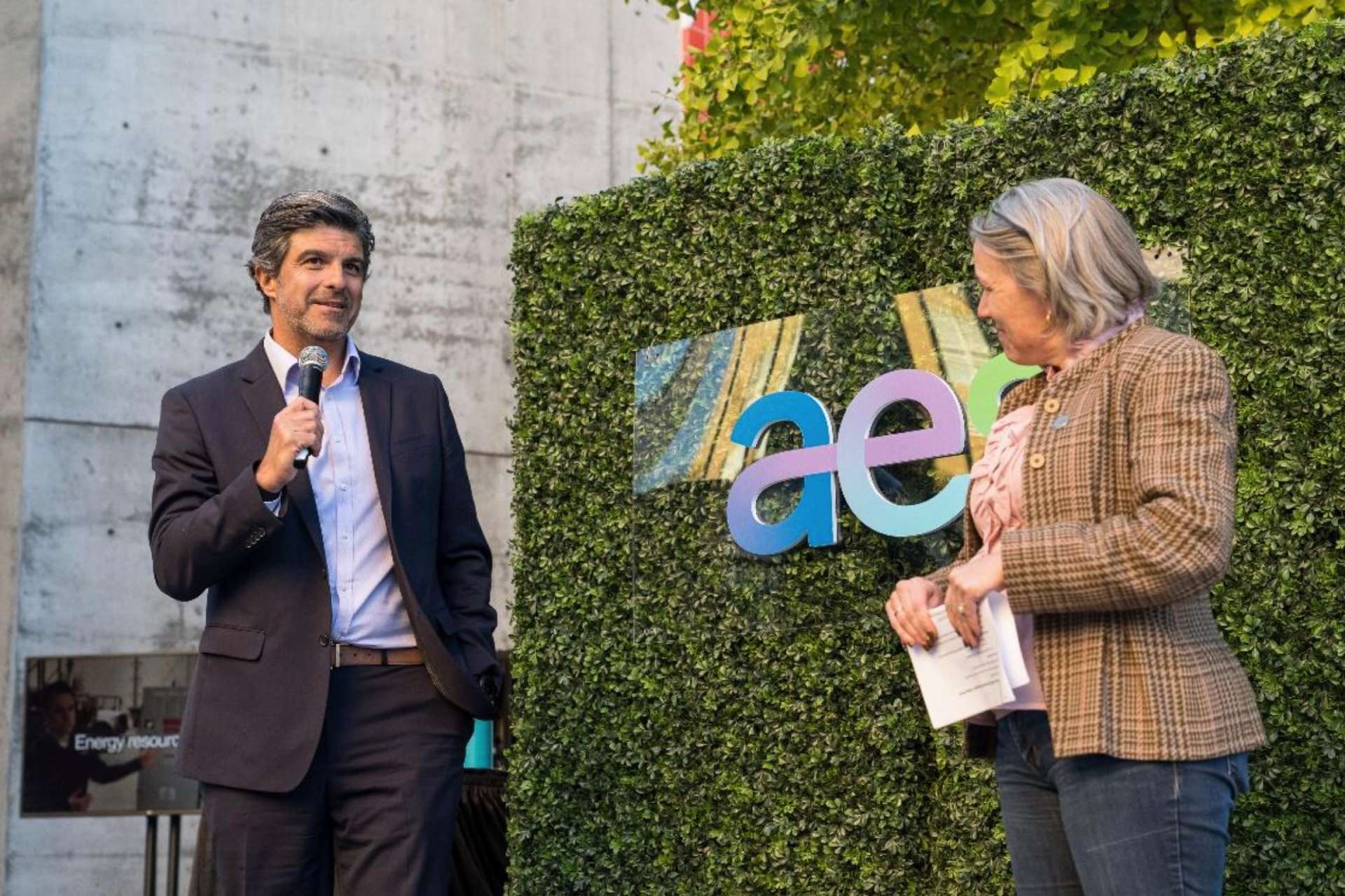Member Highlight: AES

As we wind down the year and look toward 2023 — and Spring Summit in May —we reached out to CEBA member AES to help us reflect on the amazing year that was 2022.
AES shared their experience as a member of the CEBA community, how it has impacted their clean energy journey, and where they see the industry going in the next few years.
- What prompted your organization to join the CEBA community?
At AES, our driving purpose is to accelerate the future of energy together. Innovation and co-creation are in our DNA. Our partnership-style approach is not only about the highly innovative commercial structures that we design together with our customers, but it goes across our entire value chain and lifecycle: development, finance, engineering, procurement, construction, and operations. This network of customer partnerships, interconnected through CEBA, provides a continuous source of innovation and collaboration for AES.
In fact, we partnered with CEBA in developing valuable sessions for VERGE22 to help better understand the evolving needs of clean energy customers.
- What does the future of clean energy look like for your organization?
In the past year, two developments give me confidence in the clean energy market. First, this summer, AES joined other industry leaders to form the U.S. Solar Buyer Consortium. The group is committed to purchasing more than $6 billion of solar panels and looking for manufacturers that align with both the consortium’s goals and supplying up to 7 GW of solar modules per year, starting from 2024. We’re confident this consortium will strengthen America’s energy security and independence by reducing its supply chain reliance on competing nations while also driving increased investment in domestic clean energy manufacturing.
Second, the Inflation Reduction Act (IRA) brings unprecedented support for clean energy and decarbonization investments. This is the most important and impactful legislation ever enacted for accelerating clean energy, combatting climate change, and strengthening our energy security. The IRA restores confidence and clarity for the clean energy industry for years ahead. I believe that clean energy investment — in solar, wind, energy storage, hydrogen — will increase significantly because of this legislation. That’s good for the economy, jobs, energy security, and the planet.
- What has been the most interesting clean energy technology or project you’ve worked on during your time with your organization?
There are two key areas of innovation that AES has pioneered that impact energy reliability/resilience and are delivering strong value to our customers.
The first is 24/7 carbon-free energy. It’s easy to deliver clean energy to customers when the sun is shining or the wind is blowing. But how do you structure a supply portfolio and technologies, such as energy storage, to provide carbon-free energy 24/7? We worked with some of the largest technology companies in the world (who are CEBA members) to develop a unique solution to power their operations with clean energy around the clock.
The other compelling story is battery storage. This past summer, we brought online a total of 227 MW of energy storage capacity at our Luna/LAB facility in Southern California, just in time for the record heat wave in early September. Those storage assets provided immediate value by helping keep the California power grid stable during prolonged record heat. We have more than 8 GW of battery energy storage capacity in development in the U.S., including 3.6 GW in California.
In early November, we celebrated the commercial operation of the Skipjack Solar Center in Charles City County, Virginia. This 175 MW project is the largest solar project AES brought online in the U.S. in 2022. There were a variety of pandemic-related challenges during development and construction of the Skipjack project but ultimately strong relationships with customers and the local communities drove the success of the project.
- Envision a 90% carbon-free U.S. electricity system by 2030 — what is the next step toward a carbon-free energy future?
We need to remember that the electricity system and power grid, which is the focus for much of our current decarbonization efforts, account for about 25 percent of greenhouse gas emissions in the U.S. Transportation represents nearly 30 percent and industrials about 23 percent, with various agriculture, commercial, and residential making up the remainder. This means we need to put greater emphasis on decarbonizing the transportation sector — in all its forms — as well as industry and buildings. And we need to do that now rather than in 2030. This will mean substantially increased investment in green hydrogen production and infrastructure and significant expansion of clean energy-powered electric vehicle charging infrastructure. These efforts must move forward aggressively and in parallel if we’re to avoid the worst effects of climate change.
—
This article was written in collaboration with AES team members including: Steven Craig: Manager, Customer Strategy, Tim Wolf: Manager, Content & Communications, and Kleber Costa: Chief Commercial Officer
